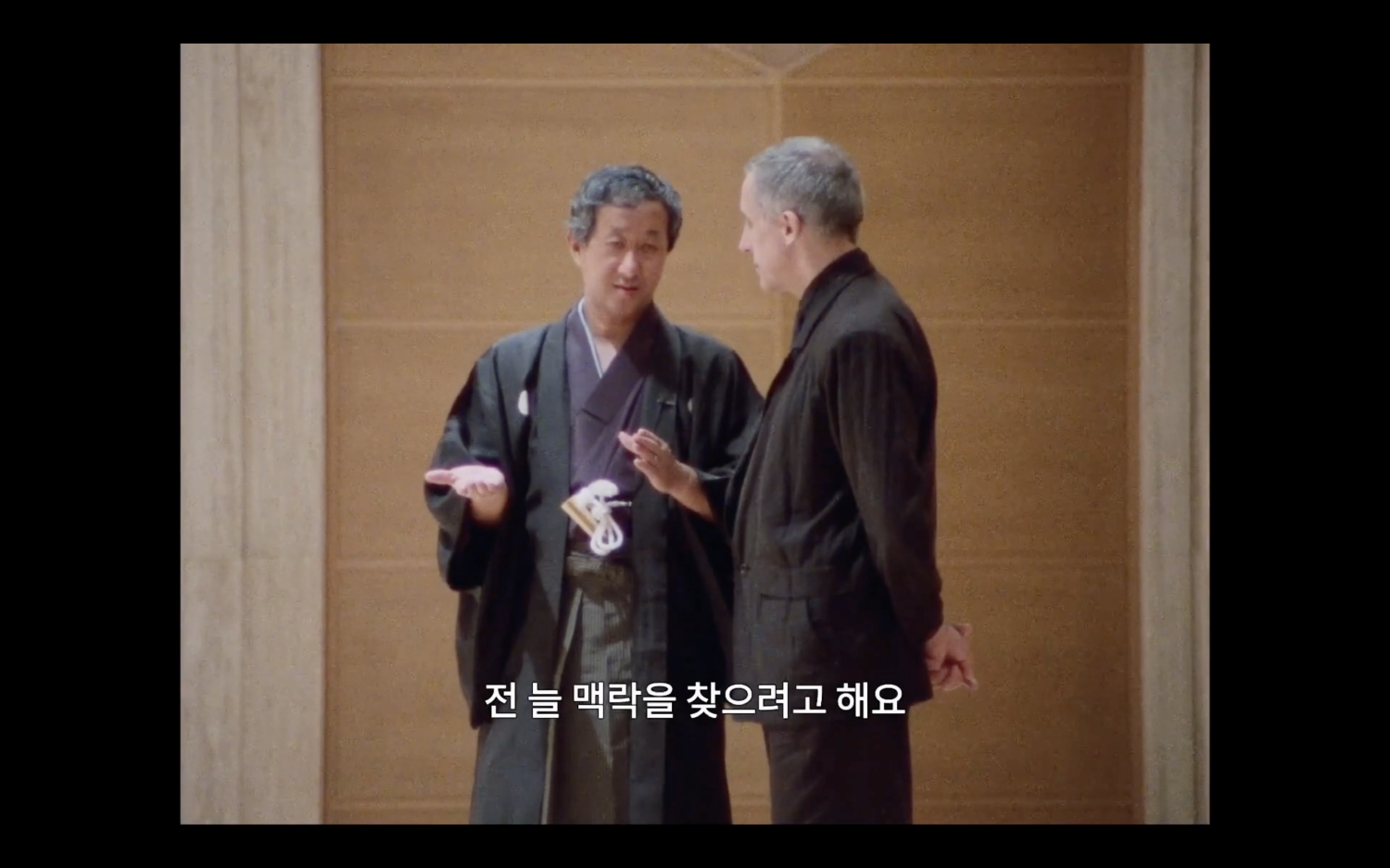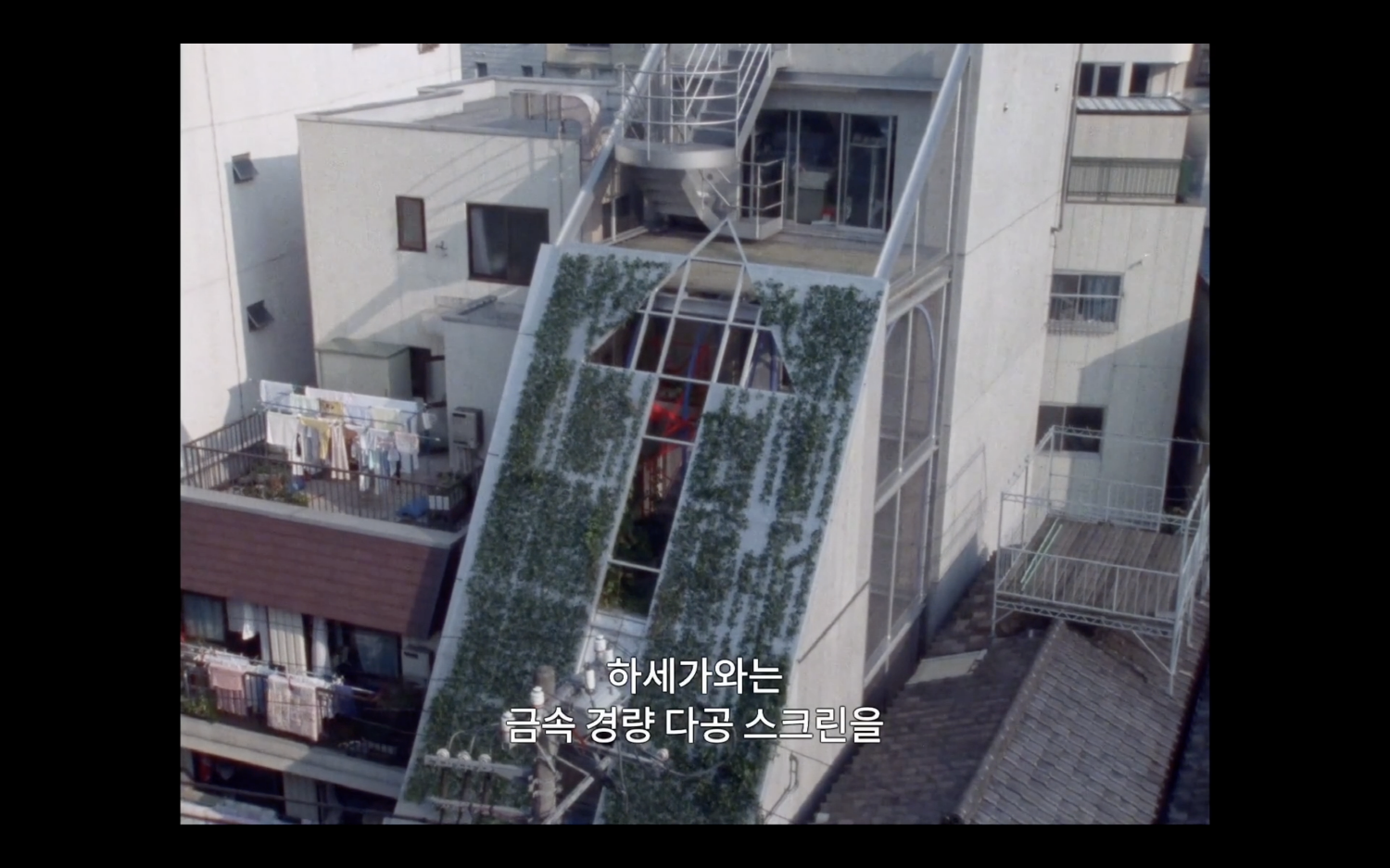SPACE October 2024 (No. 683)


Still images of Japan: 3 Generations of Avant-Garde Architects / Screenshot from NAVER TV
The 16th Seoul International Architecture Film Festival, hosted by the Korea Institute of Registered Architects, was held between Sep. 5 – 15. Under the theme ‘PLATFORM’, connecting architecture and people, the festival screened 32 films across six sections, including the opening film Radical Landscapes (2022), at Art House MOMO and NAVER TV. This year’s festival also featured a special section titled ‘Masters & Masterpieces Special: J-Architecture’. In Mar., Yamamoto Riken was named the recipient of the 2024 Pritzker Architecture Prize, making Japan the country with the most Pritzker winners to date. What values explored by Japanese architecture are worth our attention today? The ‘Masters & Masterpieces Special: J-Architecture’ section explored the past and present of Japanese architecture, as recognised by the international architectural community, through five works spanning from 1989 to 2023. The highlight was Michael Blackwood’s Japan: 3 Generations of Avant- Garde Architects (1989). The film delves into the lineage of avant- garde architects, starting with Tange Kenzo (1913 – 2005) and continuing with Shinohara Kazuo (1925 – 2006), Maki Fumihiko (1928 – 2024), Isozaki Arata (1931 – 2022), Ando Tadao (1941 –), Ito Toyo (1941 –), and Hasegawa Itsuko (1941 –). These seven architects, who illuminated a golden age of Japanese architecture, were innovators who melded Japan’s traditions with modern science and materials. Though their individual approaches to tradition, modernism, nature, and cutting-edge technology varied, their architecture communicated across generations, influenced one another and continually broke new ground, leading us to trace the paths these masters walked. They constantly surpassed their own boundaries, always pushing themselves and their work forward. The film offered a captivating glimpse into the formative days of these architects and their works at the time, adding another layer of enjoyment. Meanwhile, Make Do with Now (2022) listens to the voices of emerging Japanese architects of the present generation, who are finding their own answers. The film focuses on architects working in the periphery rather than the mainstream, moving beyond auteur-driven architecture. Today, these architects breathe fresh energy into Japanese architecture with their focus on limited resources, emerging materials, and ecological and social approaches to the city. Their work reminds us of architecture’s roles overlooked by previous generations and the urgent issues we face today. Meanwhile, the ‘Beyond: Korean Shorts & Architecture’ section explored architectural themes in Korean short films like The Birds’ Hill (2023) and Half-day (2016). In these films, the protagonists grapple with the loss of their livelihoods due to redevelopment, or apartment construction sites serve as the backdrop, providing a window into Korean society and cinema through an architectural lens. Additionally, the ‘Special Section: Architecture, Art, and Platform’ section revisited architecture from the perspective of their aesthetics, highlighting architecture as a platform for housing art. Richard Wotton: Moments Later (2022) showcased the city of Whanganui, New Zealand, which was designated a UNESCO City of Design in 2021, through the lens of photographer Richard Wotton. Wotton’s 50 years of meticulous photographic records of Whanganui underscore the functional beauty of New Zealand’s architectural heritage and capture a unique moment in the city’s history. In addition to film screenings, the 11-day event featured side events such as the Host Architect Forum and Guest Talk. At the Host Architect Forum, at which participants discussed the question, ‘In the Age of AI, What is the Platform for Architecture?’ and explored the architect’s role as a ‘strategist’ in understanding and actively using the latest technologies, with input from architecture and field experts as well as the audience.





